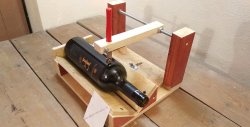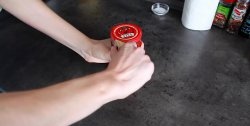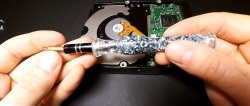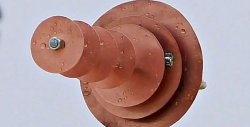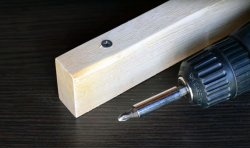How to make a comfortable tool handle from PET bottle caps
The convenience of hand tools is a concern for every craftsman. The traditional handle for a hammer is wooden, but the advent of modern materials has improved its performance characteristics. We offer one of the simplest ways to make a plastic version.
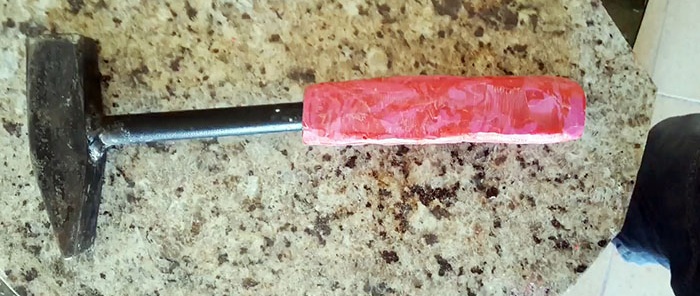
The handle is made from PET bottle caps. You need a sufficient amount of them, about 30-50 pieces. A device for pouring - easily made from wood in the shape of the future handle; 3-4 clamps are needed to fix its position. Baking paper.
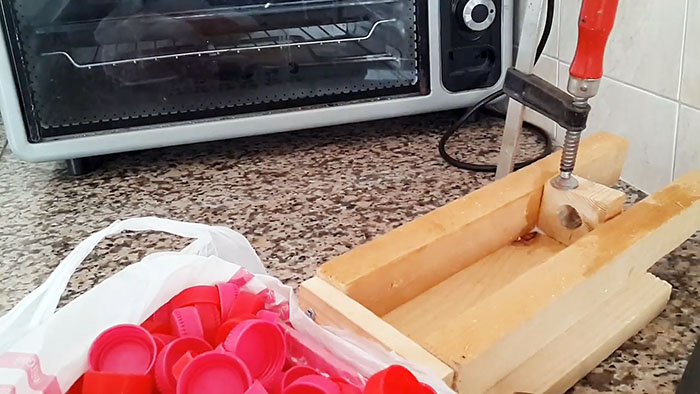
Before starting work, you need to prepare a device for molding a handle, a kind of elementary press. It is made from wooden slats, the length should be equal to the size of a hammer with a metal handle, the width should be the desired thickness. Make a U-shaped box from the planks, install a jumper at one end with a hole for a metal handle, and the other end is blank. The mold is ready.
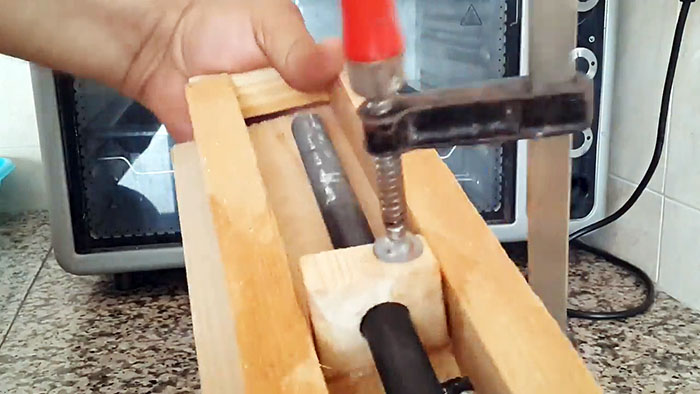
Place baking paper on a baking sheet and 15-20 bottle caps on it.Set the oven temperature to 150 degrees Celsius.
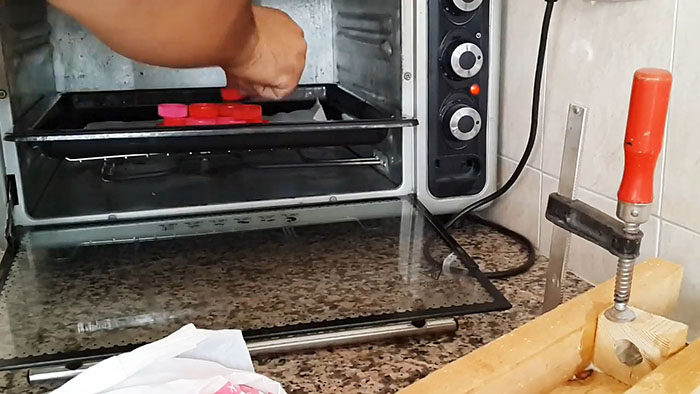
Roofs can be made of HDPE or LDPE; the melting point of these plastics is 100–130 degrees Celsius. The heating process must be visually controlled; the polymer should not completely melt, but only soften.
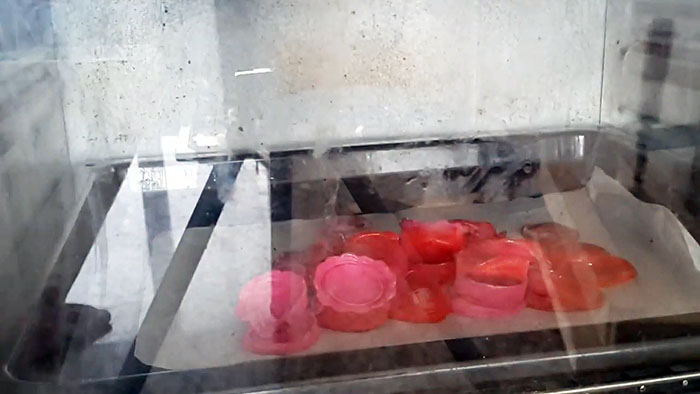
Constantly monitor the condition of the lids. Once they start to melt, remove the baking sheet and place a new batch on it. You can’t put a lot in at once - while the lower ones warm up, the upper ones will completely leak.
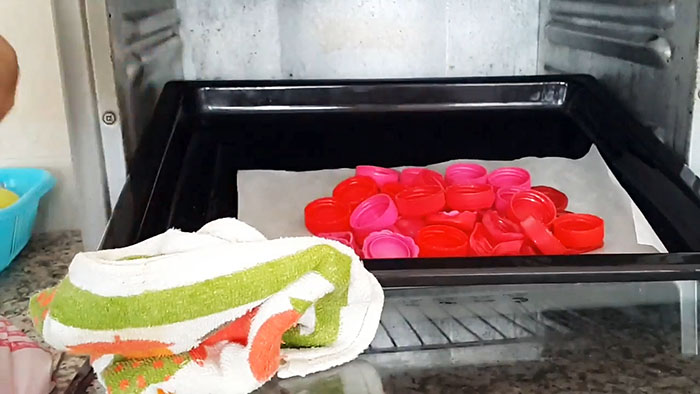
Repeat the steps several times; you will need quite a lot of caps. If the plastic goes beyond the paper, then carefully return it to its original place with a knife; it should not touch the baking sheet - it will burn.
Remove the melted plastic from the oven and place it in the prepared mold.
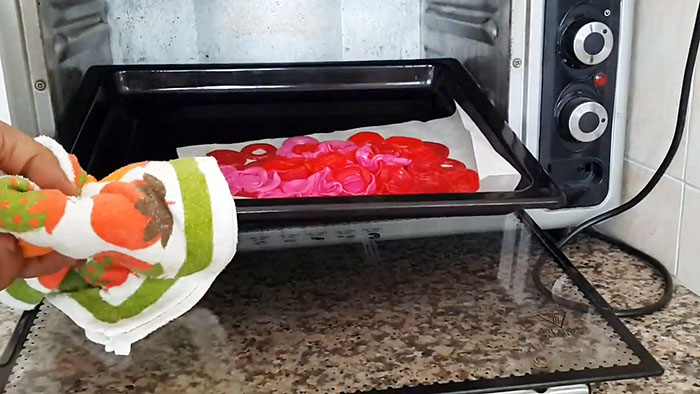
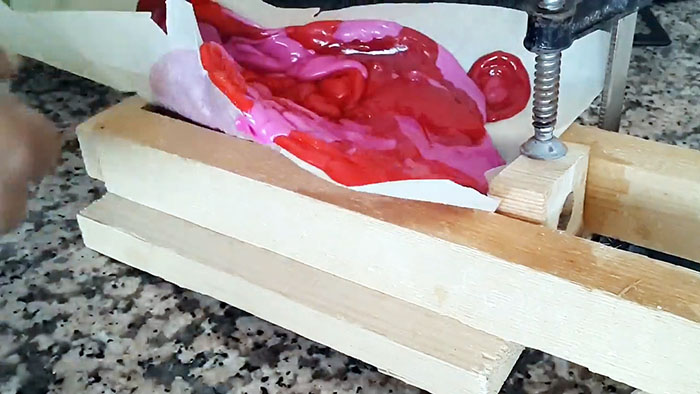
Insert the metal handle of the hammer into the polymer, using any stick to level the surface of the plastic as carefully as possible. Fill all the voids as much as possible.
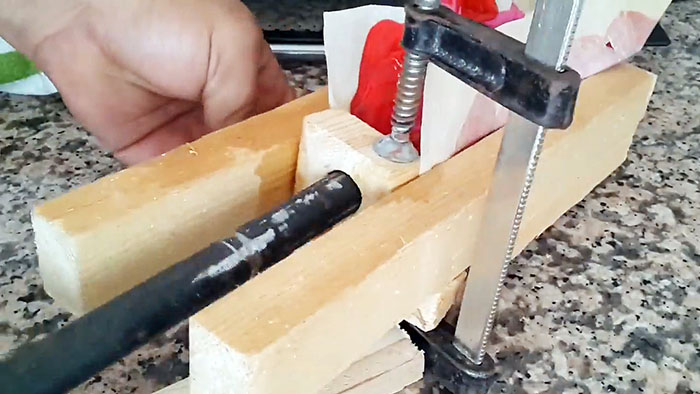
Place a board on top and use clamps to press it firmly into the mold. It is necessary to clamp with great force - the plastic should completely fill the volume of the mold, and the excess should come out into small cracks.
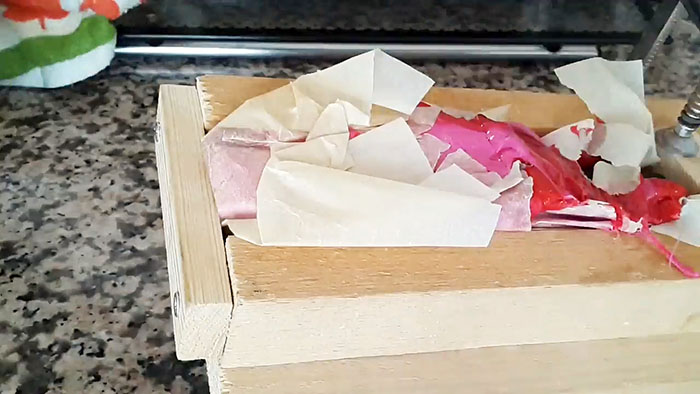
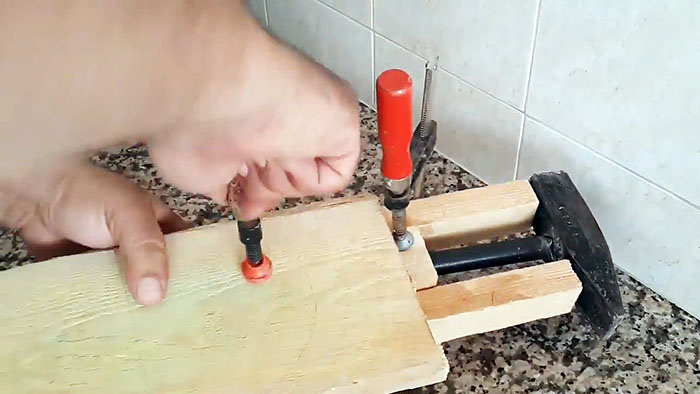
Leave the mold to harden for several hours. Disassemble it and remove the hammer with the plastic handle.
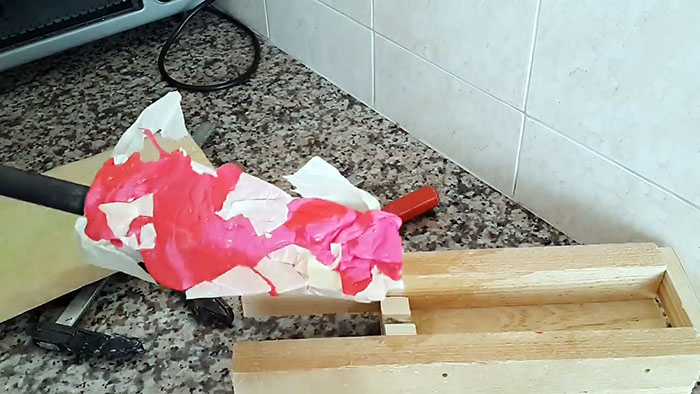
Remove the baking paper and use a knife and file to smooth and round the edges.
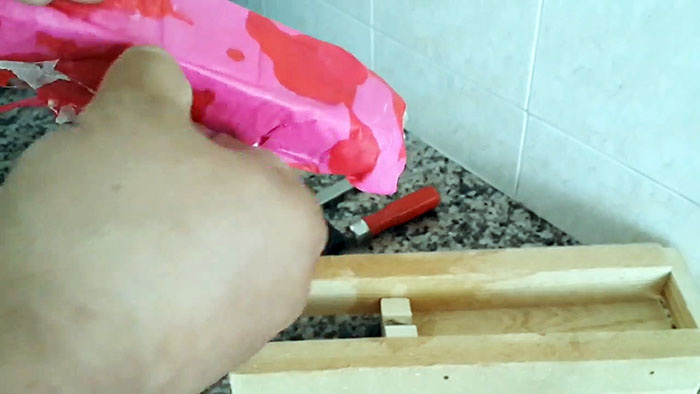
The hammer with a plastic handle is ready for its intended use.

This technology can be used to make durable and safe handles for many hand tools. Plastic perfectly absorbs shock loads and is easy and convenient to work with.

What you need to prepare
The handle is made from PET bottle caps. You need a sufficient amount of them, about 30-50 pieces. A device for pouring - easily made from wood in the shape of the future handle; 3-4 clamps are needed to fix its position. Baking paper.

Handle making process
Before starting work, you need to prepare a device for molding a handle, a kind of elementary press. It is made from wooden slats, the length should be equal to the size of a hammer with a metal handle, the width should be the desired thickness. Make a U-shaped box from the planks, install a jumper at one end with a hole for a metal handle, and the other end is blank. The mold is ready.

Place baking paper on a baking sheet and 15-20 bottle caps on it.Set the oven temperature to 150 degrees Celsius.

Roofs can be made of HDPE or LDPE; the melting point of these plastics is 100–130 degrees Celsius. The heating process must be visually controlled; the polymer should not completely melt, but only soften.

Constantly monitor the condition of the lids. Once they start to melt, remove the baking sheet and place a new batch on it. You can’t put a lot in at once - while the lower ones warm up, the upper ones will completely leak.

Repeat the steps several times; you will need quite a lot of caps. If the plastic goes beyond the paper, then carefully return it to its original place with a knife; it should not touch the baking sheet - it will burn.
Remove the melted plastic from the oven and place it in the prepared mold.


Insert the metal handle of the hammer into the polymer, using any stick to level the surface of the plastic as carefully as possible. Fill all the voids as much as possible.

Place a board on top and use clamps to press it firmly into the mold. It is necessary to clamp with great force - the plastic should completely fill the volume of the mold, and the excess should come out into small cracks.


Leave the mold to harden for several hours. Disassemble it and remove the hammer with the plastic handle.

Remove the baking paper and use a knife and file to smooth and round the edges.

The hammer with a plastic handle is ready for its intended use.

Conclusion
This technology can be used to make durable and safe handles for many hand tools. Plastic perfectly absorbs shock loads and is easy and convenient to work with.
Watch the video
Similar master classes
Particularly interesting
Comments (0)



